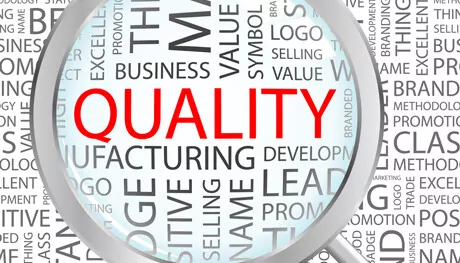Implementation of an effective change control system first and foremost requires the support of the organisation’s senior management. A well defined and formalised change control process should be described in the organisation’s quality manual, supported by well written operational procedures. A good robust change control system is imperative for ensuring that the organisation’s facilities, equipment, procedures, processes and systems remain in a validated and compliant state. Managing changes formally and appropriately is critical and having the appropriate subject matter experts identified to evaluate each change, is key. What is change? Change is an intrinsic part of the life cycle of a pharmaceutical product. A change can be an addition/deletion/modification to an organisation’s facility, utilities, processes, materials, products, procedures or equipment (including IT systems) which may impact product quality or regulatory obligations. Change control is designed to prevent unintended consequences that may occur when making a change. The four key steps involved in implementing change effectively may be summarised as (1) Identification of the change, (2) Evaluation, Classification and Impact, (3) Implementation and (4) Review of Effectiveness.
- Identification of the change:
- When the need for a change arises, the change initiator should document in detail, on an approved change control form, the specifics of the requested change, to include the current state and the reason or justification for the change. The planned due date for implementation of the change should be realistic. Appending as much relevant background information and supporting documentation to justify the change is imperative as it furnishes reviewers with full disclosure of facts to enable them to fully assess the change.
- Evaluation, classification and impact of the change:
- Representatives or subject matter experts from different functional areas of the organisation should be involved in evaluation of the change, for example, Regulatory Affairs, QA, QC, Production, Technical Services and others as relevant. Formation of a change control committee, with regular meetings and comprising the various subject matter experts serves to ensure that the change is fully assessed and any impact that could occur is considered. The principles of quality risk management should be incorporated into review and evaluation of the change and documented as a formal or informal risk analysis. An example of impacted areas to consider are: Documentation (SOPs, forms, site master file), Quality Agreements, Manufacturing Authorisations, compliance with GxP regulations, qualification/validation status, IT systems. In addition, consideration should be given to new training requirements that may arise, if regulatory authority notification is required and if the proposed change impacts any other open change controls. The date for implementation of the change is agreed. The corollary to the evaluation phase is formal approval to proceed with the change, classification of the change (e.g. minor or major) and agreement on a list of actions as well as agreement on action owners and due dates for completion of actions. The actions should comprise pre-change implementation and post-change implementation actions. The change initiator, or change owner, should ensure that change classification, evaluation, impact, actions and due dates, along with supporting documentation, are detailed on the change control form.
- Implementation of the change:
- It is imperative to track the progress of all pre-change implementation actions to ensure each action is complete prior to the planned date of change implementation. Documentary evidence should be available and should be attached to the change control form. In the event that all pre-change implementation actions cannot be completed by the planned implementation date, an extension may be granted, subject to review and approval by the affected functional areas. The pre-defined post-change implementation actions should be addressed following implementation, with evidence of completion attached to the change control form. The change is considered closed once all actions are complete, reviewed and formally approved on the change control form.
- Review of Effectiveness of the change:
- Review of effectiveness of the change should be performed within 3 months of completion of all actions. Deviation occurrence after change implementation can be an indication that the change control was not effective. In all cases, the effectiveness of the change should be assessed and recorded appropriately. A review of effectiveness of all changes should be discussed at the Quality Management Review meetings and a decision made as to whether further modifications are necessary or whether the change is to be considered complete.
In conclusion, implementation of an effective change control system requires commitment from senior management, well documented operational procedures and systematic execution to ensure that the organisation’s facilities, equipment, systems and processes remain in a validated and compliant state. If you would like to discuss implementation of an effective change control system and support – please connect with us +353 1 846 47 42 or contactirl@pharmalex.com.








